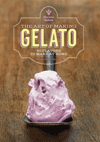How to minimize added sugars in ice cream
Declarable reduction of ‘sugars’ while retaining sensory appeal is possible.




The pending change to nutrition labeling regulations requiring the declaration of “added sugars” (AS) in the Nutrition Facts panel is likely to make AS content the subject of competitive market positioning. The pending increase in ice cream serving size from 1/2 cup to 2/3 cup (which increases AS by >30% per serving) further complicates AS management.
The regulation change defines AS as all “sugars” (i.e., the sum of all mono- and disaccharides) used in ice cream except for lactose introduced via dairy ingredients. The most direct way to reduce AS is to decrease the levels of sucrose and other sources of sugars. In doing this, it is necessary to consider the contribution of sugars to sweetness, as well as their influence on freezing point and on bulking effects. Management of water mobility is important to the retention of structural properties that are key contributors to freezing behavior and sensory properties (body, texture, flavor delivery), particularly in regard to control of ice crystal and air bubble growth.
It is also possible to achieve reduced levels of AS per serving by increasing overrun, using available approaches while maintaining acceptable eating quality. That this may result in nonconformity to the standard of identity is not a serious drawback, if the desired reduction in AS is achieved with no loss in sensory appeal. Given the growing number of products offered as “frozen dairy desserts,” this may be an approach to consider.
With 65-plus GRAS sweeteners available, the task of reducing sugar level is daunting, even without considering necessary bulking agents. The table illustrates the effect of several basic compositional adjustments on AS level and freezing profile (i.e., freezing point and two important indices that reflect the amount of water frozen at various temperatures). Sweetness is held within a strict ±0.5% range to retain delivery of the intensity and quality of sweetness to support any given characterizing flavor(s). Stabilizers/emulsifiers, although important, are not included due to the variety of types and the broad variability of functionalities represented.
Freezer index (FI) refers to the amount of water frozen at a designated draw temperature. It is related to textural shelf life in that the more water frozen in the barrel of the ice cream freezer, the smaller the initial ice crystal size. FI is also useful in ensuring freezing properties do not interfere with the desired behavior at the freezer and during packaging and filling.
Texture stability index (TSI) represents the amount of water that contributes to ice crystal growth during an episode of heat shock between the temperatures indicated. Thus, in comparison to a control/reference, the greater the TSI, the shorter the textural shelf life of any given mix.
Composition 1 represents a typical ice cream included as a reference. Composition 2 is an example of the achievement of ~30% AS reduction by partially replacing sucrose with 10 dextrose equivalent (DE) maltodextrin, and maintaining sweetness with a blend of high-intensity sweeteners (HIS) with 200X equivalent sweetness. Blends of HIS, when combined based on the sweetness contribution of each, can deliver more “sucrose-like” sweetness.
In addition to reducing AS level, changes represented by Composition 2 provide product improvements through an increase in freezing point that improves texture stability, as reflected by ~15% increases in the FI and TSI. It also enhances the influence of freeze concentration in controlling ice crystal and air bubble growth.
Allulose is a “rare sugar” with virtually no calories. As such, it does not contribute to the daily value established for “added sugars” that is based on calories. In recognition of that, on April 17, FDA issued a draft guidance announcing its intention to allow allulose to be excluded from total and added sugars counts on Nutrition and Supplement Facts labels, and declared the calorie contribution of allulose to be 0.4 calories per gram.
That development is reflected in Compositions 3 and 4. In Composition 3, the sugar reduction is the same as in Composition 2, with allulose used at a level designed to maintain sweetness parity. At that level, no bulking agent is needed. It can be seen that the AS level is comparable to that of Composition 2.
However, as a monosaccharide, allulose depresses freezing point substantially, with attendant undesirable effects on freezing profile.
Those effects are reduced substantially in Composition 4 by further reduction in sucrose, which is compensated for by adding maltodextrin and an HIS blend. In this composition, the level of AS is only about one-third that of the reference composition.
As noted in the table, more aggressive reduction in AS can be achieved by increasing overrun. Specifically, for each of the compositions shown, increasing overrun from 90% to 130% reduces AS levels an additional ~17%.
Novel approaches using conventional ingredients make it possible to achieve “zero” AS (< 0.5 gram AS per serving) or even “sugar-free” (< 0.5 gram total “sugars” per serving) nutrient content claims.
In addition to the factors discussed here, the process of reducing AS involves a broad set of considerations. Even so, declarable reduction of “sugars” while retaining sensory appeal is possible.
For more about “sugar” reduction, including “added sugars,” “no sugars added,” and “true sugar-free” approaches, as well as managing ice cream mix dynamics, join Drs. Tharp and Young at “Tharp & Young on Ice Cream Technical Short Course, Workshops and Clinics,” Singapore, June 17-21, 2019, or in Las Vegas, Dec. 4-6, 2019. Learn more at www.onicecream.com.
Looking for a reprint of this article?
From high-res PDFs to custom plaques, order your copy today!










